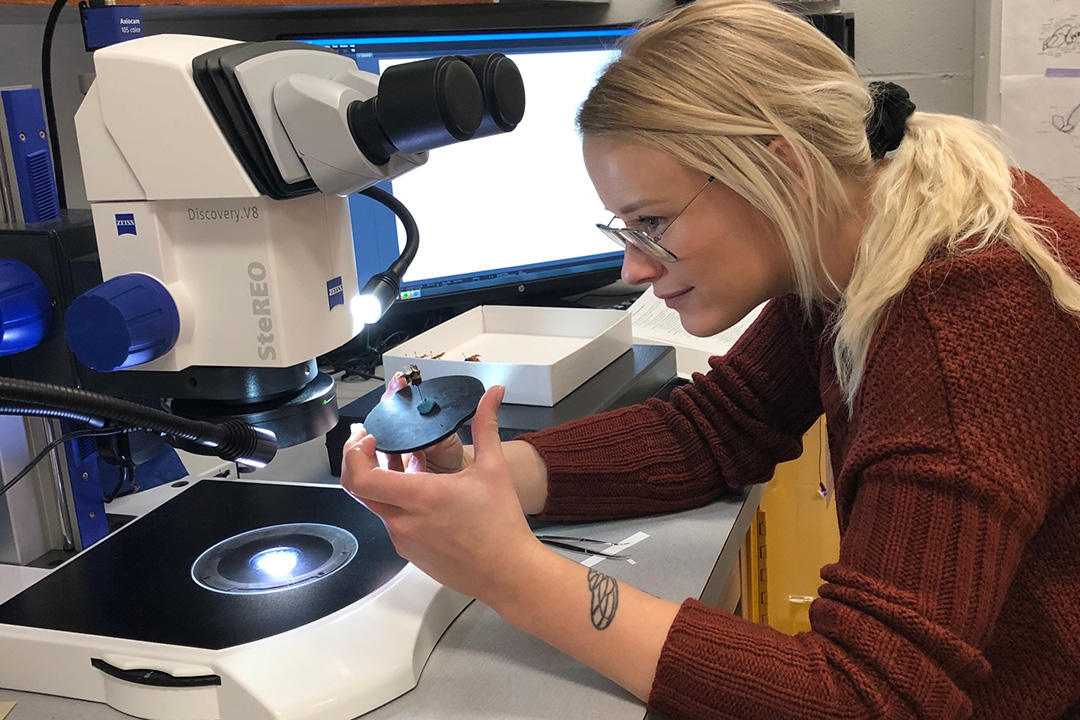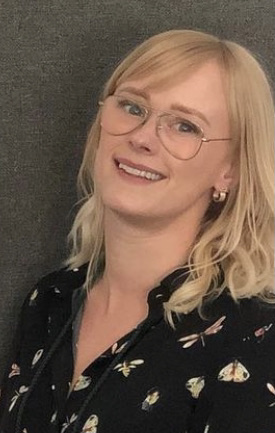
USask Plant Sciences graduate advocates for bees via research
Samantha Morrice’s thesis research focused on the importance of wetlands as habitat for native bees and their importance as crop pollinators.
By Brett Makulowich“Who wouldn’t want to help save the bees?”
It’s a question Samantha Morrice asks, knowing the important role that bees play in supporting biodiversity and ecosystem health.
“I realized I wanted to become an ecologist/conservation biologist after taking biology classes during my undergraduate degree,” said Morrice. “I’ve always loved nature and have a fascination for animals and their interactions.”

Morrice will officially receive her Master of Science in Plant Sciences at University of Saskatchewan (USask) Spring Convocation, taking place in-person June 6-10 at Merlis Belsher Place.
In December 2021, she successfully defended her master’s thesis, Diversity and Abundance of Bees in Canadian Prairie Agroecosystems: Understanding the Role of Remnant and Restored Habitat in Supporting Native Bee Populations. Her thesis was supervised by Dr. Sean Prager (PhD), assistant professor in the Department of Plant Sciences in the College of Agriculture and Bioresources at USask.
As the United Nations prepares to observe World Bee Day on May 20, Morrice’s research speaks to the importance of protecting bees by protecting the habitats that support them.
“Protecting and preserving bee habitats, in this case wetland edges and semi-natural ditches and hedgerows, provides pollination services and preserves biodiversity,” said Morrice.
Prior to Morrice’s research, there was little known about the diversity of bees in the dense wetland region of Saskatchewan (located near Humboldt, Sask.). This area is called the Prairie Pothole region, due to its land depressions that are now filled with small permanent or semi-permanent bodies of water. These wetlands support high levels of biodiversity, some of which is not found in other areas of the province. Sometimes, areas of the wetlands are filled in to make more acreage for growing crops, or the perimeter of the wetlands is ploughed.
Her research consisted of two years of bee sampling from 15 different sites using passive insect traps, followed by months of sample processing and identification in the lab. It was important to be able to identify and catalogue the diversity of bees that were using the wetland habitat as a resource. Knowing what the bee populations look like could advocate for monitoring efforts in the future. Morrice also collected other beneficial insects found in the passive traps that will later be identified by a colleague.
The results from Morrice’s research showed that bees nesting within the margins of wetland habitat may contribute to increased pollination services in agricultural crops. The research also showed that wetland remnants and florally diverse field margins, as well as areas of semi-natural re-seeded pasture, play an important role in supporting native pollinator communities in highly cultivated landscapes. Morrice’s research received funding from Ducks Unlimited Canada and the National Science and Engineering Research Council of Canada.
“Research surveys like this allow us to provide important information to farmers about the beneficial biodiversity that exists on their land,” said Morrice. “By preserving wetland habitat, farmers are providing food and nesting resources to pollinators that help to increase the yields on their flowering crops. Research such as this can help to inform future management of agricultural land that conserves biodiversity but is also beneficial to farmers.”
Making an impact is what kept Morrice motivated during her graduate degree and the pandemic.
“I wanted to make a difference at the end of the day and finishing grad school was something I knew would help me achieve that.”
A highlight of Morrice’s time in grad school was the connections she made in Dr. Prager’s entomology lab in the College of Agriculture and Bioresources.
“I enjoyed working with other students who were also interested in insects and creating awareness of the benefits insects offer,” said Morrice.
For her future plans, Morrice wants to find a position with a conservation organization conducting outreach or further research regarding habitat protection, restoration, and monitoring.
“The more we learn and share our research, the more positive of an impact we can have on this planet.”

